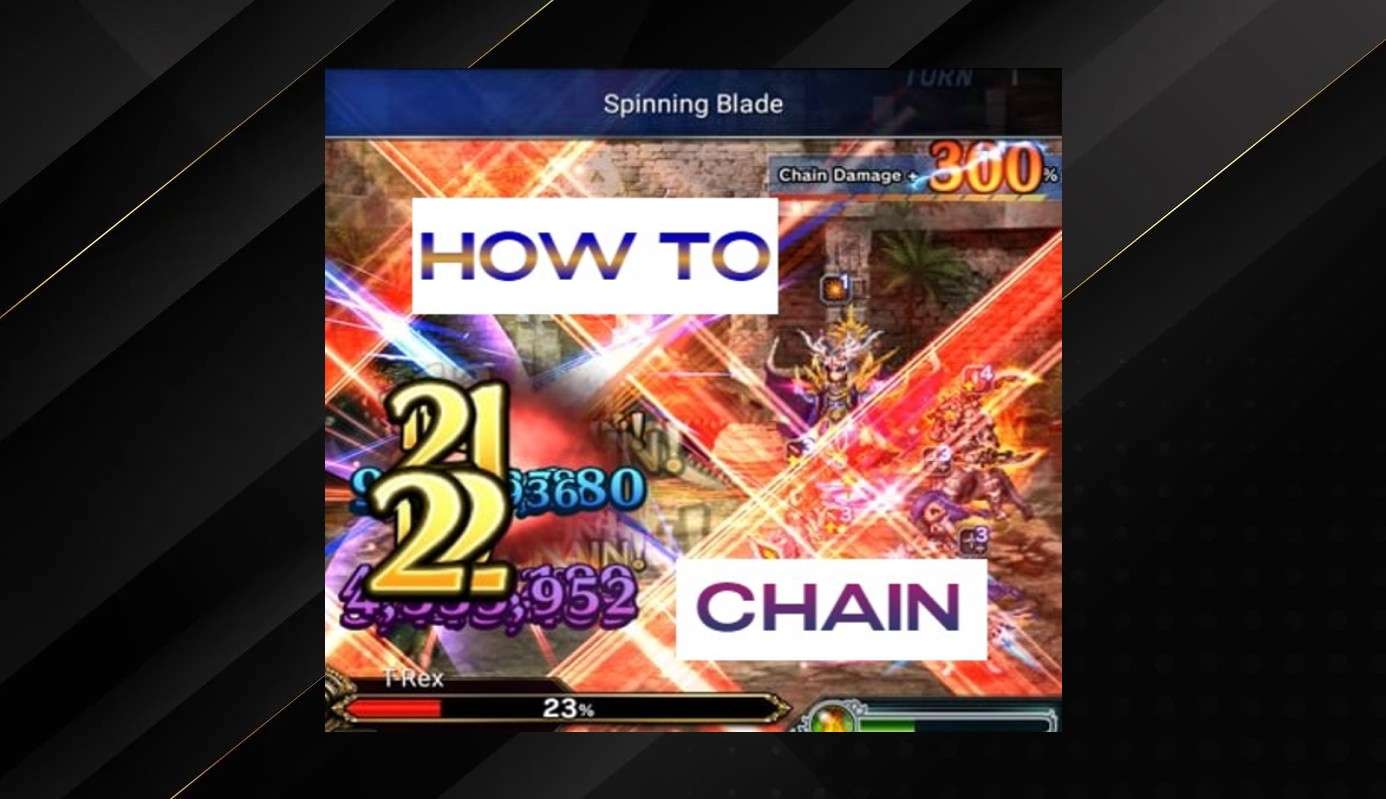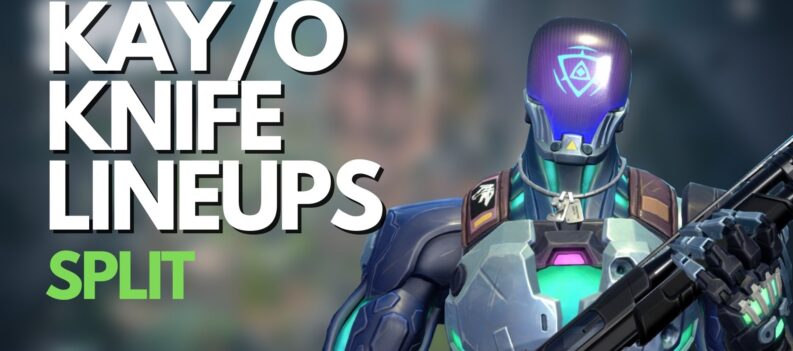Final Fantasy: Brave Exvius is a turn-based RPG that is designed to mimic the gameplay of Valkyrie Profile while adapting the elements of the classic FF games. It hits most 90’s gamers with a nostalgia bomb, that’s for sure. What sets it apart from all the other retro-style RPGs is its immersive mechanic that allows you to employ special attacks from multiple units to perform what we call Chain Attacks.

Chaining
Chaining is a mechanic that lets you increase your attack damage up to 4 times. You will need two to three units to perform a chain. If you make more than one units attack in quick succession, you will get a 10% to 40% damage increase. Keep in mind that your Chain will only be registered if your attacks have successfully hit the required number of chains.

There are several types of Chaining; each one has a different set of Chain Modifiers and a required number of chains to reach the damage climax or the 4x Modifier Cap.
| TYPE | CHAIN MODIFIER | NUMBER OF CHAINS TO REACH 4X MODIFIER CAP |
| Normal Chain | +0.1 | 30 |
| Spark chain | +0.1 / +0.4 | 12 |
| Elemental Chain | +0.3 / +0.6 | 7 |
To receive a monstrous damage bonus when Chaining, you can increase your Chain Mod up to 6x through passive abilities or using Materia. Raising your Mod Cap also means you will need a higher number of chains to reach it.
Normal Chain

To Chain normally, you’ll just have to tap on two or three of your units to attack consecutively.
A Regular Chain occurs if there’s a delay from the previous Chain for 0 to 20 frames. It will also be registered as a Normal Chain if you don’t add any elemental (or equip any weapon with elemental effect) to your attack.
Spark Chain

To perform a Spark Chain, you’ll have to simultaneously tap on two or three of your units to attack. In order to execute this successfully, you will have to time your attack well. A Spark Chain will only be registered if there’s no delay from the previous unit’s hit.
Your first attempt may be unsuccessful, you may encounter a bit of a delay in your hits, and that’s okay. Perfecting this move takes a lot of practice, but that’s what a training dummy is for.
Note: The training dummy can be found inside The Tower of Wind in the Farplane.
Elemental Chain

An Elemental Chain requires you to have at least two units with physical or magical elemental attacks. If your units have none of those abilities, you could equip them with elemental weapons. You could also add elements in your attacks if you have units using the ability Element Imbue.
You could either do a Normal Elemental Chain or a Spark Elemental Chain; the latter is more powerful than the other but harder to pull off. You could inflict more damage with a Double or Triple Elemental Chain if you have two units that can multi-cast two or three different elements (i.e., lightning, blizzard, and fire) simultaneously.
However, there is one more crucial aspect that we must remember when it comes to the art of Chaining.
Chaining Families
Having two units with the same level and similar abilities engage in Chain Attacks will make your life easier without question. Even so, having the freedom to group your different units with unique and flashy abilities to perform a perfect Chain is what makes FFBE fun.
Basically, Chaining is done when two or three units have the same attack patterns or the same Chaining Family.

To check which Chaining Family an ability belongs to, look at the top right corner of the box, just beside the unit’s ability name.
The Chaining Families that we commonly see as of now are:
- SR – Stardust Ray (10 hits)
- BS – Bolting Strike (9 hits)
- AR – Aureole Ray (30 hits)
- AZ – Absolute Zero (11 hits)
- AMOE – Absolute Mirror of Equity (8 hits)
- CW – Chaos Wave (5 hits)
- CWA – Chaos Wave Awakened (8 hits)
- DR – Divine Ruination (7 hits)
- TAG (7 hits)
The best Chaining Families to use are the ones with the highest damage and highest chain numbers.
Chaining families that can cause the highest damage are CW, CWA, BS, SR, AMOE, TAG. Although it still depends on how powerful your units are if you consider their stats and equipment.
TAG Chainers have a low requirement for chain caps, but they can inflict a great deal of damage to your enemies.
AMOE and CWA Chainers can also cut the mustard, but they require a lot of units to reach a high number of chains.
AR Chainers have the highest chain numbers, but the only downside is, they can only cause above minimal damage.
Chainers & Finishers
Almost every unit that can perform chain attacks is called a Chainer. As implemented earlier, every unit has a different number of hits, and they all have Damage Weight assigned to them. Each ability has a damage weight total of 100%.

For instance, some Chainers can hit six times, each hit has a weight of 20%, and the damage will be split evenly.
But there are units that can hit a couple of times with less damage but finish off with one hit that has greater weight damage.
These units are called Finishers, and they have what we call backload damage.
As the Chaining starts, the damage exponentially rises until it reaches the 4x or 6x Mod Cap. With that in mind, it’s important to take advantage of the increase in power and end the Chain with a finisher. It would also help to prevent Chaining from breaking abruptly.
Why do Chains Break?

Unfortunately, certain limitations trigger a break in your Chaining. Most of us hate to see our consecutive hits end while we’re in the middle of a Chain attack, and here are some of the reasons why such things happen:
- Mobile Device Limitations: Timing is a vital factor in chaining because FFBE’s game logic is tied to the frame rate, which runs 60 frames per second. Suppose that the frame rate slows down, the game logic will also be affected. The frame rate varies on mobile devices, and that’s why there are chain families like CWA that are easy to chain on older or laggy devices. Most mobile devices won’t allow you to tap on two units to attack at once. So you’ll have to lightly tap on the two units almost at the same time. Or you could lean on the thing most players rely on — android emulators. AR works perfectly on emulators with a built-in Macro Recorder, but that’s a topic for another day.
- Movement: Some units move when they attack, while others don’t. It would be best to choose a chainer with no movement since a unit that moves will attack from its place to the enemy’s position, and that animation can cause a variable amount of delay.
- Limit Break Delay (With CG or no CG): A unit’s attack starts and hits the enemy depending on its attack frames. An LB’s animation usually causes a 1 to 2 frames delay that interrupts the chaining of units.
- Single Wielders VS Dual Wielders: If you attempt to chain using a single wielder unit and a dual wielder unit, the chances of it succeeding is pretty slim due to the timing incompatibility of some single wielder’s and dual wielder’s attack frames.
Chaining can be difficult to perfect, given that it has way too many variables to consider. If you’re a beginner, the best do right now is to familiarize yourself with the Chainers and Finishers that you currently own. Once you learn how to time your hits correctly, everything will eventually fall into place.













